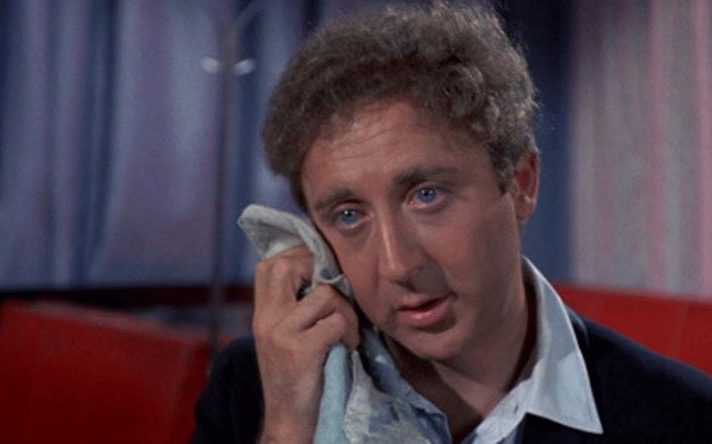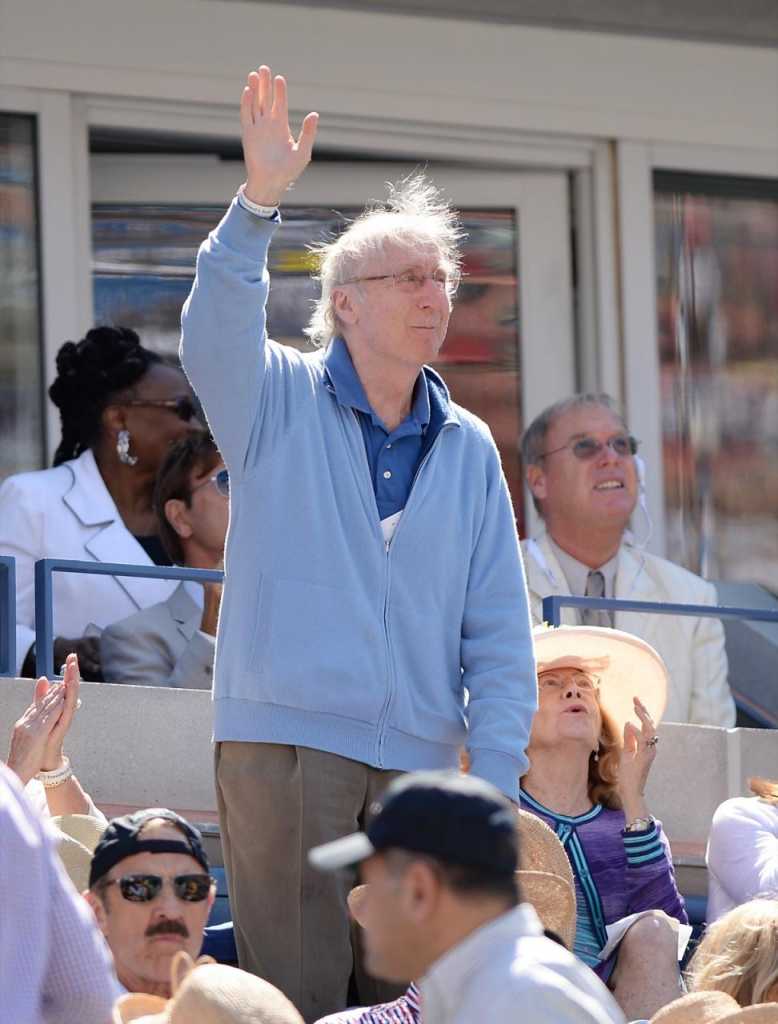1. Young Frankenstein – It’s FronkenSTEEN
Young Frederick Frankenstein (Gene Wilder) has dedicated his life to escaping the shadow of his notorious mad-scientist grandfather, changing the pronunciation of his own name to move away from the family heritage. When he inherits the family estate in Transylvania, however, he leaves America to go and visit, and has this memorable first meeting with his soon-to-be-manservant Igor (Marty Feldman).
It’s fair to say that they don’t get off to an entirely smooth start, and Wilder’s expression of polite bafflement at some of Igor’s assertions is a thing of beauty.
2. Blazing Saddles – The Waco Kid
Wilder was known for his onscreen rants, but he knew that sometimes less is more. In this case, he’s gentle and almost bland as the gunslinger so good (“I musta killed more men than Cecil B. DeMille”) he had to lay down his arms.
In a quiet monotone, Wilder delivers Mel Brooks’s string of punchlinesand the occasional bit of physical ridiculousness (“Yeah, but I shoot with this hand”) and relies on the dialogue to deliver the laughs without having to strain for them. Perhaps he knew instinctively that the capper to his story (“Little bastard shot me in the ass!”) is good enough to work without any help.
3. Willy Wonka And The Chocolate Factory – Wonka’s introduction
This unforgettable scene was Wilder’s idea, sketched out to director Mel Stuart as a condition of taking the role. Stuart hesitated, asking why it was so important to Wilder. “Because from that time on, no one will know if I’m lying or telling the truth.”
His plan worked; you can choose to see Wilder’s Wonka as the tragic hero or scheming villain of the piece, though the truth is that he’s probably both. Wilder’s performance dominated the film so thoroughly that it justified changing the title of the beloved book; Charlie was never the real focus here. Amazingly, the film was not a success on its initial release, and only gained its current cult status after years of repeat viewings on TV.
4. The Producers – The Blue Blanket
For a vintage Wilder freak-out, look no further than his role as the other meek and mild Leo Bloom in Mel Brooks’ The Producers, the enabler who sets Zero Mostel’s Max Bialystock on his way to Broadway fraud. Bloom’s trying to lay out his scheme to Bialystock here, only to become so stressed by the older man’s constant interruptions that he’s forced to resort to his childhood blankie for comfort.

Once that is restored he strong enough to carry on explaining his plan to con investors out of a fortune by producing a sure-fire Broadway flop – a plan which only flounders when their terrible, terrible show becomes an overnight sensation.
5. Young Frankenstein – Puttin’ On The Ritz
Peter Boyle, deservedly, gets a lot of the credit for this scene. But his incoherent bellows only work in contrast to Wilder’s elegance. The scientist determinedly forges ahead with a Fred Astaire-style tap number while the monster struggles to match him.
Wilder conceived and co-wrote this script, and deserves enormous credit for turning Frankenstein into a sort of nightmare stage mother and the Monster into a frightened little child here. “For god’s sake come on! Are you trying to make me look like a fool?” is not the best response to a terrified monster – and yet it’s so blatantly inappropriate that it works.
6. The Adventures Of Sherlock Holmes’ Smarter Brother – The Kangaroo Hop
No, not Mycroft. This one is about Sigerson Holmes (Wilder), the youngest of the three Holmes brothers and – at least in his own view – the smartest. When Sherlock disappears he sneakily transfers some of his cases to his envious brother Sigerson to solve, pitting him against a mathematically-challenged Moriarty (Leo McKern).
This scene is the one that people remember best, as Sigerson and his client / suspect Jenny Hill (Madeline Kahn, reuniting with Wilder after Young Frankenstein) begin what seems like a rather tender, romantic moment before breaking into one of the more ridiculous musical-hall-style numbers ever committed to film.
7. Stir Crazy – ‘That’s right, we bad’
Richard Pryor and Gene Wilder weren’t particularly friendly off-screen – by the time of this second film together (after 1976’s Silver Streak) Pryor was already partying hard and delaying shooting regularly, unlike the professional Wilder – but they had a magic together onscreen. Here, the two have been wrongly convicted of bank robbery, and try to cultivate a sufficiently tough image that their fellow cons will leave them alone.
Pryor almost manages to look cool as he struts along; Wilder’s efforts to imitate him mean he appears to be suffering some sort of seizure. Then Pryor begins to gibber in panic when faced with a prison bully, while Wilder smiles in the vague way of someone suffering a dissociative break.
8. Everything You Always Wanted To Know About Sex (*But Were Afraid To Ask) – The Sheep
In the fast-paced world of comedy, it takes a brave man to use hesitation. Wilder’s Doctor Ross stars in one of the vignettes in Woody Allen’s sex comedy, where he’s faced with a patient who declares himself in love with a sheep. After checking that he did indeed hear what he thought he heard, Wilder pauses for what seems like eons.
First he fights back a smile, then his eyes flicker right multiple times as he appears to play out possible responses in his head, then he seeks inspiration from thin air. Finally, he manages a strangled, “Oh. I see.” Knowing how the vignette progresses from there only makes it better…
9. See No Evil, Hear No Evil
It’s a pretty basic joke: Wilder is deaf, Pryor is blind. In this first scene together, neither is aware of the other’s condition, and there’s a nice bit of business here as they go around in circles and accuse one another of outrageous rudeness before Pryor’s sunny nature cuts through all the confusion and eventually calms things down.
The pair suffered diminishing returns in their four films together (this was the third; the last was Another You in 1991), but their contrasting styles and energy, and the fact that they took turns being each other’s straight man, meant that they were always fun to watch.
10. Willy Wonka And The Chocolate Factory – Pure Imagination
The orchestration for this is, if we’re honest, just a little bit much, striving too hard for whimsy. But Wilder’s restrained, elegant vocal made it a classic, combined with an off-kilter physical performance (pulling out Mike TV’s hair?) that reminds you this Wonka is not an entirely safe magical figure.
There’s an impish, even malevolent, streak in his nature, but also a sense of melancholy underneath the purple velvet coat. He may be singing about the importance of imagination, but he sings it like a lament – and even with the entire gang of visitors in the room, he sings it largely to himself, isolated from the rest.































Artículos Relacionados: